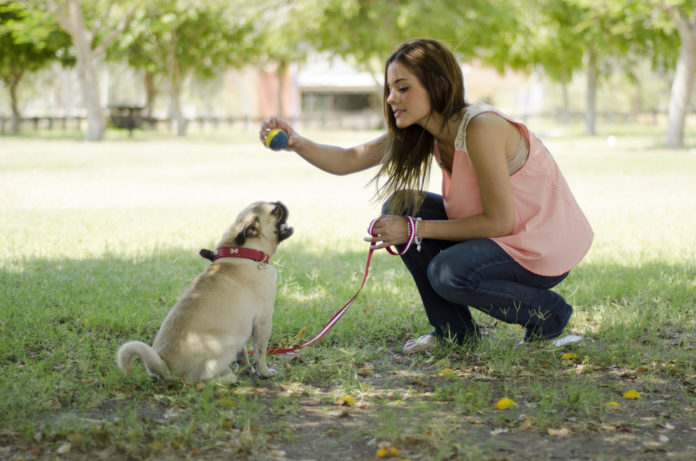Training your dog with toys vs. treats

Not all dogs are food-motivated, which can make treat training ineffective. Here’s how to use toys as training rewards instead.
This may be hard to believe, but not all dogs are motivated by food — and that’s okay. Food is not the only reward in the world. This article is aimed at dogs who are unmotivated by treat-free training, but the tips that follow can be a good change of routine for any dog – including those that find food too exciting and can’t focus on learning when there’s the slightest possibility of treats.
Before you start
The first step is to determine if your dog really isn’t food-motivated or if he’s simply full and not interested in eating at the moment. I often train my dogs using their dinners. This is a fun way to keep them lean and fit without giving them an additional meal’s worth of treats in between times. Before dinner, when your dog is hungry, try training him with a few pieces of his food and see if his motivation level spikes a bit. If so, that’s great: you can work on your training with his dinnertime meals.
If your dog is truly food-unmotivated, you can confirm it by using a higher-value food. If I had a choice between pasta and a cracker, I’m going to hold out for pasta (you probably would too). Similarly, if you’re using dry, hard treats for training, try one with more scent and flavor.
Turn to his toys
Still not interested in food? That’s okay! Think about your dog’s toys and arrange them in order of excitement level. For example, a ball provides a good time, a Frisbee offers off-the-wall excitement…but his squeaky hedgehog toy tops them all.
We can make a list of the joy level each of these toys brings in this example, from lowest to highest:
- Ball
- Frisbee
- Hedgehog toy
- A new toy that only comes out at training time!
We know the ball is lowest on the “joy list”. So get out the Frisbee, hide it behind you, and start with a simple cue such as “sit”; but instead of rewarding your dog with food when he sits, reward him with the Frisbee and let him play for a minute or two. If that toy isn’t deemed a sufficiently exciting reward, step it up to next level; in this case, the hedgehog toy.
Remember that you can make his toys more exciting by squeaking and moving them around, thereby increasing his drive for them. And when you’re done, hide the toys to keep them extra special for the next training session.
If you have a dog that runs away with his toys, keep him on a long leash during training to keep him near you. A good choice is Sleepypod’s Power Leash.
As you work on this, you’ll discover a range of other rewards your dog enjoys besides treats, and this will lead to new ways of working together. Enjoy your training adventures!



